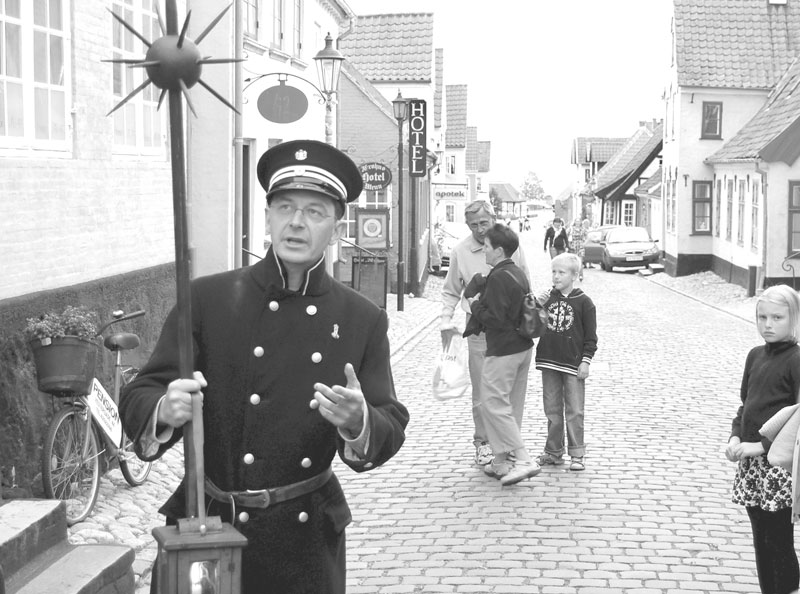What’s new in Germany, Switzerland and Scandinavia

Travelers heading to these rewarding destinations will be greeted by a host of new museums, improved infrastructure and special events. Here’s what to expect if you visit.
Germany
• MUNICH celebrates its 850th anniversary this year with a series of cultural events (theater, cabaret, concerts, exhibitions, tours and so on), mostly on weekends in June and July.
Munich’s new Jewish Museum features a small but well-done exhibit on Jewish life, and its City Museum will reopen with shiny new exhibits after an extensive renovation.
The charming new Beer and Oktoberfest Museum is located in a brightly lit but creaky house (the oldest in the city center) with low ceilings. It covers the history of Munich’s breweries and the origins of Oktoberfest, its famous annual keg fest.
The renovated and now futuristic — rather than frumpy — BMW Museum has reopened.
And just outside Munich, at Dachau, a new visitors’ center/café opens in 2008.
• In BERLIN, a crisp mini-museum called “The Kennedys” has just opened on Pariser Platz. It’s a cross between an archive of documents related to JFK and Jackie’s visit to Berlin during the Cold War and a photographic shrine to the good-looking couple.
On the other end of Unter den Linden boulevard sits the Hohenzollern Palace (blown up by the East Germans and rebuilt as the “Palace of the People” to standard communist-era eyesore standards). While its facade is being restored to its Prussian glory, the new interior will hold a mall.
Also in Berlin, the building that formerly housed the Egyptian Museum (which moved to the city’s Museum Island) reopens this spring as the Scharf-Gerstenberg Museum, featuring surrealist art.
Switzerland
• In June, several Swiss and Austrian cities, including ZÜRICH and BERN, will host the Euro 2008 soccer championships (see the schedule at www.uefa.com/competitions/euro/index.html). Expect crowds.
• ZERMATT’s former Alpine Museum, now renamed the Matterhorn Museum, has been rebuilt as a glass-dome-covered quasi-archaeological dig, featuring old buildings of Zermatt’s past. (If you ever need to say “glass-dome-covered quasi-archaeological dig” in German, that’s “Glaskuppelverdecktquasiarchaologischeausschachtung.”)
• LAUSANNE’s funicular, connecting the lakefront with the upper part of town, should be finished by the end of 2008. Until that time, a bus covers the route.
Scandinavia
• In COPENHAGEN, Denmark, the helpful Use-It tourist information center is closing, leaving visitors at the mercy of the for-profit “Copenhagen Right Now” franchise (which deceptively presents itself as a tourist information service).
The modern highrise Danhostel Copenhagen City (H.C. Andersens Boulevard 50, 1553 Copenhagen V, Denmark; for bookings, phone +45 3318 8332, www.dgi-byen.com) is a great value for travelers of any age, especially for those traveling alone in expensive Scandinavia. For one person, rates start at DKK120 (near $124) in a dorm room, not including hostel card, bed linen rental or breakfast.
Also in Copenhagen, Rosenborg Castle will continue to be renovated through 2008, with more rooms opening to the public as work is completed.
• In ROSKILDE, just west of Copenhagen, the Viking Ship Museum’s replica warship called the Sea Stallion, built by museum volunteers using ancient techniques, sailed to Ireland in 2007. They’ll sail it back to Roskilde in 2008, where it will be part of a special exhibit.
• In the charming Danish island town of EROSKOBING, you can now join the Night Watchman on his rounds for a fun tour of the village on summer evenings.
• OSLO, Norway’s, striking new Opera House will open in 2008, part of the redevelopment of the city’s harbor across from the main train station.
The compelling Norwegian Holocaust Center is now open — and, fittingly, located in the former home of Nazi collaborator Vidkun Quisling (on Bygdøy, Oslo’s “museum island”).
The Holmenkollen Ski Jump will close for part of 2008 and be rebuilt in preparation for the 2011 World Ski Jump championship, but the adjacent Ski Museum should remain open.
• Elsewhere in Norway, the main E16 highway between Oslo and Bergen now passes through the “Norway in a Nutshell” town of Aurland before plunging into the world’s longest tunnel. To avoid those efficient but dark 15 miles, you can follow the old road over the mountains, pausing scenically at the new STEGASTEIN viewpoint.
• Entrance fees have been reinstated at state-run museums in STOCKHOLM, Sweden, making the Stockholm Card a better value for visitors (sold at the tourist information office and at www.stockholmtown.com).
From April through October, you can bike cheaply around that city for the day through the CityBikes program.
The Museum of Medieval Stockholm will be closed through the fall of 2009 for renovation, but some of its collection will be temporarily displayed at the Kulturhuset at the square, Sergels Torg.
The upcoming ABBA: The Museum, dedicated to Sweden’s dancing queens — and kings — of 1970s disco, will keep fans waiting until June 2009 before it opens.
Whether you’re seeking compelling history, the world’s biggest beer fest or a walk at dusk through a quiet Danish town, Europe always pulls out all the stops for tourists.
